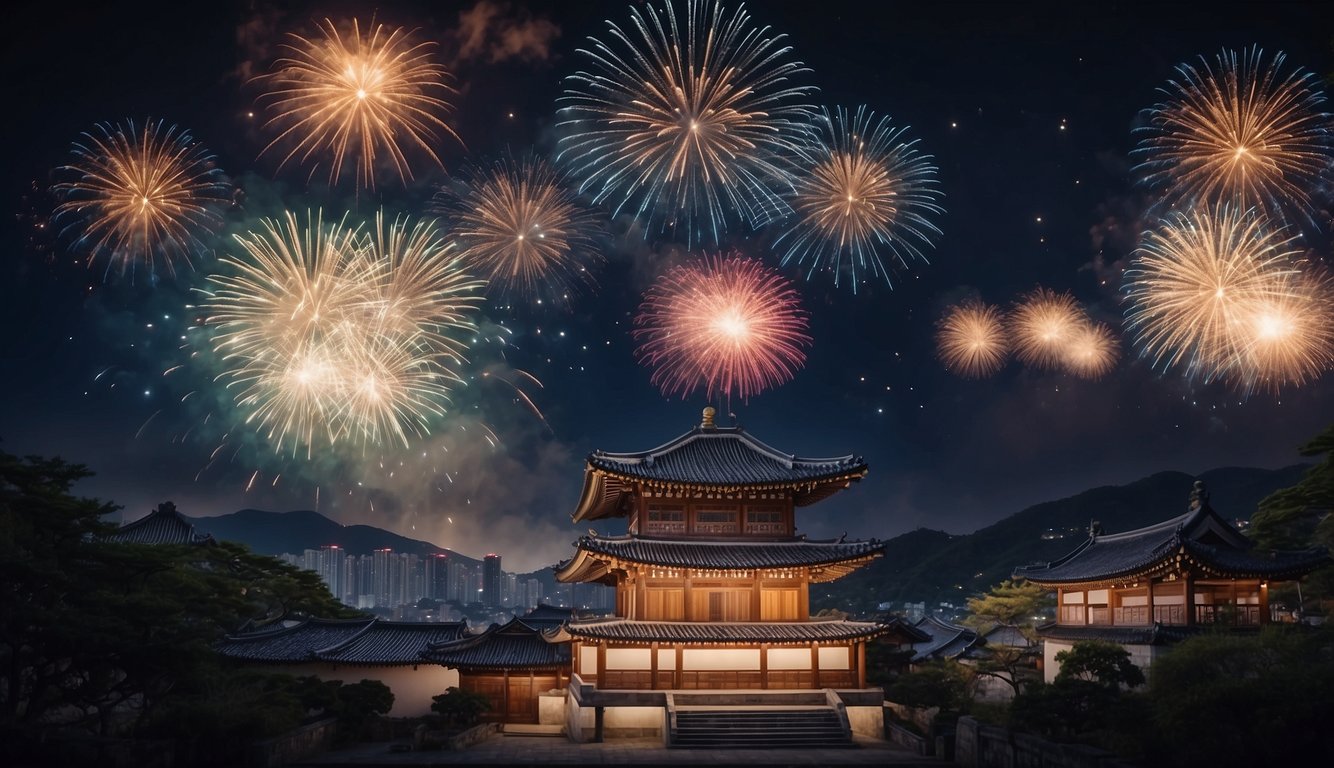Gwangbokjeol, known in Korea as Independence Day, is a significant national holiday celebrated annually on August 15. This day marks the momentous occasion when Korea regained its independence after enduring 35 years under Japanese colonial rule. The name Gwangbokjeol translates to “the day the light returned,” symbolizing Korea’s emergence from the dark period of external oppression into the light of freedom and self-determination.
This day is celebrated with various events and activities that evoke the spirit of patriotism and honor the sacrifices made for Korea’s independence. The flag of the Republic of Korea, also known as the Taegukgi, is prominently displayed, and commemorative ceremonies are held throughout the country.
These events serve as a reminder of Korea’s historical struggles and the resilience of its people. Additionally, Gwangbokjeol is an opportunity to reflect on the nation’s progress since liberation and to foster unity among Koreans.
Key Takeaways
- Gwangbokjeol commemorates the return of sovereignty to Korea on August 15.
- Commemorative events and displays of the Taegukgi embody national pride and remembrance.
- The holiday prompts reflection on Korea’s historical journey and ongoing unity.
Historical Context

We begin by exploring the turbulent period that led to the establishment of Independence Day, a day that marks a significant turn in Korean history. This section delves into the years of Japanese colonial rule, the struggles for sovereignty, and the ultimate emergence of freedom.
Colonization Period
During the Colonization Period, Korea endured a long era of Japanese occupation. In 1910, the formal annexation of Korea by Japan brought about the start of a harsh Colonial Rule. This period was marked by the suppression of Korean culture, exploitation of resources, and forced assimilation into the Japanese way of life.
Path to Independence
The Path to Independence was paved with the resilience and determination of the Korean people. Activists from various backgrounds united to oppose Japanese oppression, leading to pivotal moments such as the March 1st Movement in 1919.
This peaceful demonstration turned into a nationwide uprising, strengthening the resolve for sovereignty. Simultaneously, the Provisional Government of the Republic of Korea was established in exile, striving for international support and planning for a free Korea.
Day of Liberation
The Day of Liberation, also known as Victory Over Japan Day, marks the culmination of the independence struggle. On August 15, 1945, the unconditional Japanese Surrender at the end of World War II led to the liberation of Korea after 35 years under Japanese rule.
This day is celebrated as Gwangbokjeol (National Liberation Day of Korea), with historical significance that underlines Korea’s sovereignty and national pride restoration.
National Celebrations

In celebrating National Liberation Day, we honor our shared history and culture through various public observances and meaningful ceremonies. From the heart of Seoul to the Independence Hall of Korea, we engage in a host of activities that reinforce our national pride and remembrance of the efforts that led to our nation’s liberation.
Public Observances
On August 15, the streets come alive as public holiday festivities unfold across South Korea. Government-led official ceremonies mark the day’s commencement, attended by officials and citizens alike, often beginning with the ringing of the Bosingak Bell in Seoul.
Parades and ceremonies further emphasize national unity and the spirit of independence. Flying the Taegeukgi, the national flag, is a common sight, representing a symbol of nationalism and peace.
Cultural Significance
National holiday celebrations delve into the heart of Korean culture. Concerts showcasing traditional Korean music and dance invite us to reflect on our identity and heritage. Meanwhile, exhibitions spotlighting historical events offer insight into the sacrifices that paved the way for our autonomy.
Throughout the nation, a reverent acknowledgment of our storied past through these cultural events deepens our national consciousness.
Independence Hall of Korea
Our national pride focal point is the Independence Hall of Korea, located in Cheonan. This historical site houses extensive exhibitions detailing our journey toward independence, conveying the essence of our struggle for freedom.
On this day, a visit to the Independence Hall is more than educational; it’s a pilgrimage to the heart of our national story, underscoring the undying values that continue to shape our society.
Memorials and Remembrance

In commemorating Independence Day in Korea, we pay homage to the sites and individuals that played pivotal roles in our nation’s freedom. Our tributes focus not only on the historical importance but also on the individual sacrifices made by our national heroes.
Seodaemun Prison History Hall
At Seodaemun Prison History Hall, we remember the activists who were arrested and imprisoned for fighting for Korea’s independence. Seodaemun Prison’s walls have witnessed our patriots’ relentless spirit; the pain and hope encapsulated here are integral to our history. Every Independence Day, Korean National Flags are prominently displayed as a symbol of the nation they valiantly fought to preserve.
Special Recognitions
Special pardons are often granted on Independence Day as a gesture of goodwill and remembrance of our past struggles. We honor our National Heroes through various recognitions, ensuring their bravery is remembered.
We also sing the Gwangbokjeol Song in unison, a powerful act that echoes the deep respect we have for those who have sacrificed for our country—including those who faced assassination for our cause. Their memories are enshrined in our hearts forever, reminding us of the price paid for independence.
Impact on Modern Korea

Recognizing the significant effects of National Liberation Day on South Korea, we observe profound influences on cultural identity and political dynamics. These reflections are unmistakably rooted in the journey from national independence to the democratic state we witness today.
Cultural Identity
Regarding cultural identity, the National Liberation Day of Korea profoundly reinstated the pride and unity amongst us Koreans. Hangul, the Korean alphabet, has emerged as a cornerstone of our linguistic heritage and a symbol of resistance against past Japanese attempts to suppress our language during their governance.
The resurgence and celebration of Hangul promote our distinct cultural identity and linguistic autonomy. Similarly, the Korean Flag (Taegeukgi) has become emblematic of our spirit and resolve, fostering a national identity that has withstood challenges from the Japanese Government, the Korean War, and the ongoing tensions with North Korea.
- Hangul: Central to our educational systems and cultural expression.
- Korean Flag: A national emblem displayed with honor, especially on the National Liberation Day.
Political Dynamics
Our quest for liberty and sovereignty has invariably shaped our political landscape. Following liberation from Japanese rule, the quest for democracy in South Korea gained momentum, culminating in a government that now upholds democratic values and champions diplomacy.
The post-liberation period saw South Korea navigating the complexities of international relations, including forming a strategic alliance with the U.S to bolster our defense against the North’s aggressive stance. The political transformation post-independence laid the groundwork for a democratic society that we continue to develop and enhance.
- Democracy: A hard-fought achievement that continues to evolve and define our governance.
- Diplomacy: Essential for maintaining stability in the Korean peninsula and fostering relations with global partners.
FAQ – Independence Day in Korea
What is Independence Day in Korea?
Independence Day in Korea, also known as Gwangbokjeol (광복절), is celebrated on August 15th. It commemorates the liberation of Korea from Japanese colonial rule in 1945 at the end of World War II.
How is Independence Day Celebrated in Korea?
Celebrations include official ceremonies, the raising of the Korean flag (Taegeukgi), cultural events, and performances. Many people visit national cemeteries and memorials to honor freedom fighters and independence activists.
What Are Some Traditional Activities on Korean Independence Day?
Traditional activities include watching the national flag-raising ceremony, participating in or watching parades, visiting historical sites related to the independence movement, and enjoying traditional Korean performances and games.
If you enjoyed reading about Independence Day in Korea, check out our other articles:
- Grenada Independence Day 2024: Celebrating National Identity and History
- Estonia Independence Day 2024: Significance and Celebrations
- Cape Verde Independence Day 2024: Significance and Celebrations
Feel free to also check out our other Articles from the category “Independence Day“ and don’t forget to follow us on Pinterest.

